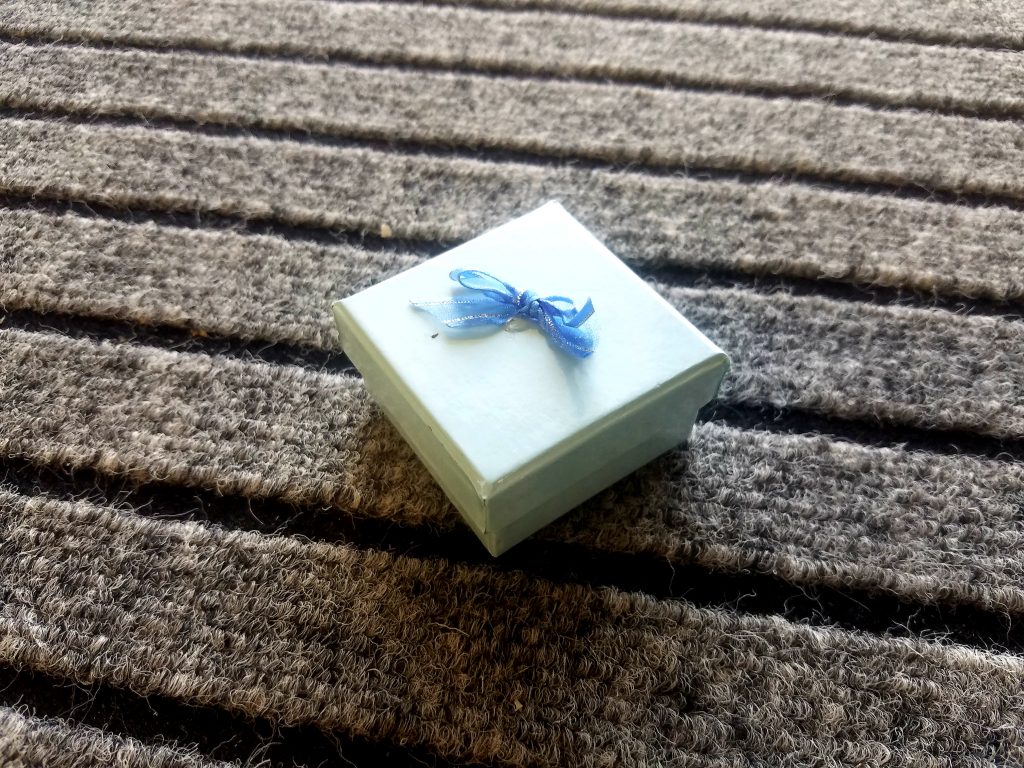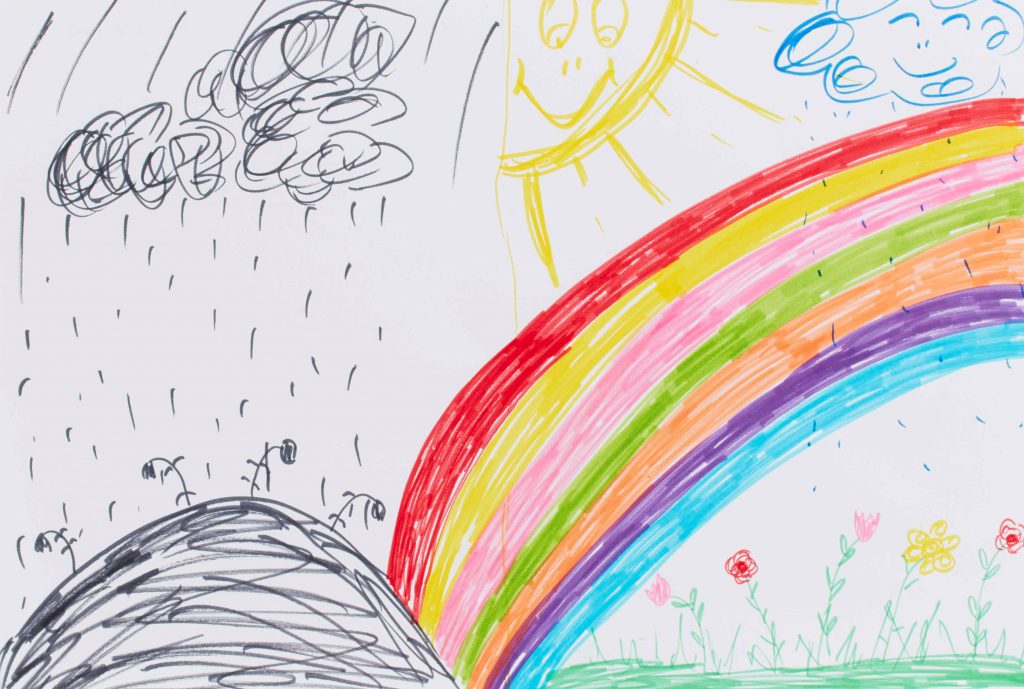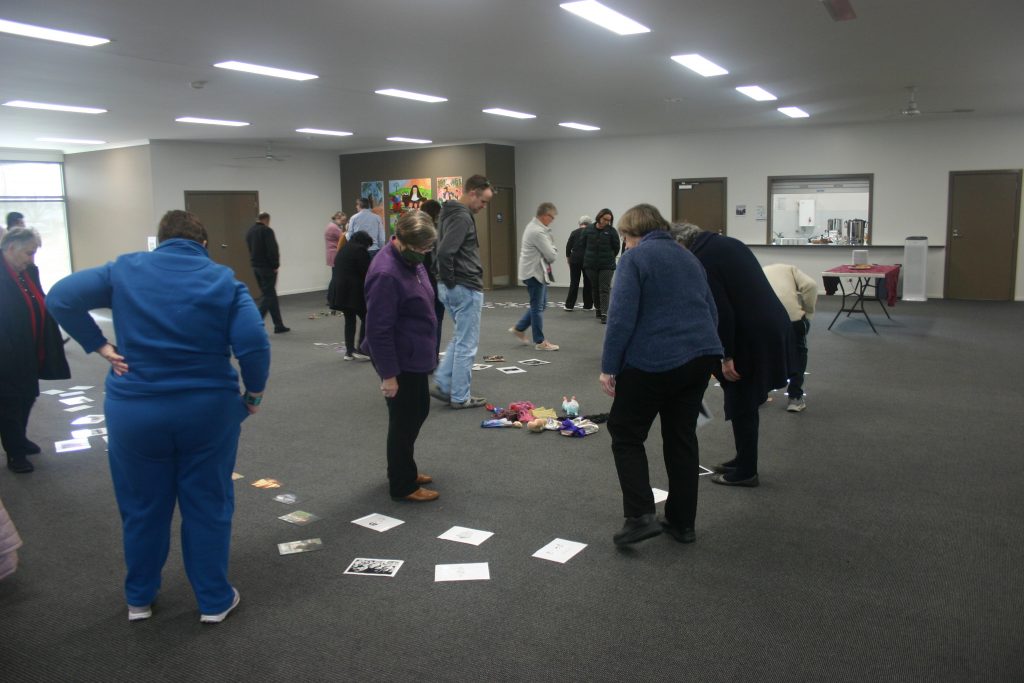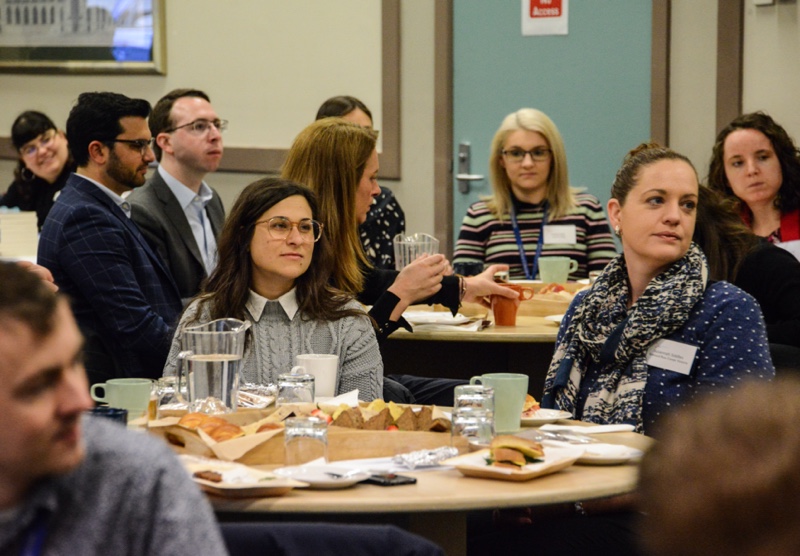
Amongst a collection of objects—words and images—sits a small blue box. This box has been chosen during an activity that examines what might be found in an environment of domestic violence. Why has this box been selected? The person who has placed it, explains, ‘Boxes hold secrets.’ This simple statement encapsulates the underlying message of the ‘Shining A Light’ workshops, which aim to ‘shine a light’ or ‘remove the lid’ on the experiences and underlying causes of domestic violence.
Sr Nicole Rotaru RSM, facilitator of the workshops being auspiced by Catholic Social Services Victoria in the Diocese of Sale, explained further, ‘When we understand what is happening, it give us possibilities to do something. It can empower us to make other choices.’
Understanding personal experiences
Held in Traralgon on 9 July, the workshop provided a safe environment for participants to learn from one another, guided by Sr Nicole’s in-depth understanding of the impacts of domestic and family violence. Personal stories, the experiences of family members and friends, and work-related situations were shared in a rich conversation that brought to life the sobering statistics of domestic violence in Australia:
- Police get called to a domestic violence matter every 2 minutes
- On average, one women every week is killed by a partner or former partner
- One in three women has experienced physical violence since the age of 15
As conversations developed through the workshop, it became clear that many people may have seen the impacts of domestic violence but in examining these experiences through the course of the session, were provided with a better understanding of the underlying circumstances.
‘My sister lived in a situation of domestic violence. Her husband had a raging jealousy. Even now that he lives in a nursing home, he will call her 10 to 15 times a day to check up on her,’ said one participant.
Through facilitated conversation, the group came to see that power and control underpin dominating, coercive, calculated behaviours intended to create fear in another person.
Discussions of the underlying causes of domestic violence, the wider social context of gender inequality and how we can respond allowed a deeper understanding to develop. Comments about the learnings of the day included:
‘I now better understand some of the subtleties of domestic violence.’
‘I have an awareness now that this happens.’
‘This has helped me to articulate what processes are at play.’
‘I often look back on children I taught. I wish I’d been able to attend this workshop 30 years ago.’
Workshop participants
Children and Domestic Violence
A theme that emerged during the workshop was the impact of domestic violence on children. Through reflecting on a case study, Sr Nicole introduced the group to the art work of Grace, a 40 year old woman, and her children David (aged 7) and Willow (aged 6), who created their artworks when they were living in a safe house after leaving a situation of domestic violence.

Sr Nicole, who has a background in creative arts therapy, provided participants with insights into the experiences of Grace, David and Willow as the group explored the elements of each of their artworks*.
Nicole encouraged the group to describe the features in Grace’s picture which has two distinct parts and the telling title, ‘Then and Now’: the contrast of black and colour, the dying flowers versus the living colourful flowers, the absence of the sun compared with the smiling sun, the hill as opposed to the flat green grass, the dark ominous cloud as opposed to the smiling cloud.

David’s sand box creation, which he called ‘The Creepy World’ gives some insights into his experiences in life. This takes on particular significance when understood in the context of both Grace’s artwork and the families experience of domestic violence. David explains his work:
The Super Hero is helping the world by saving the fairies and the Skylanders. The dinosaur is going to eat their house. There are lots of baddies coming: snakes and rockets and lady bugs and a gorilla and sharks and evil star fishes and evil feathers. The dinosaur is going to eat the whole entire world. The Bear cards say the dinosaur is cheeky and angry.
David’s description echoes a comment made earlier in the session by a participant: ‘Often kids will play and look for an external hero to swoop in and save the day, and solve all the problems’.

Willow’s artwork, titled ‘The Horse Mystery’ and her description of it shed light on the confusion experience by children who witness domestic violence: ‘The horse is looking at something but she doesn’t know what it is. The horse is trying to figure out what it is.’
Sr Nicole observed: ‘Children love both their parents and if a parent is violent to the other, this causes children to feel unsafe, confused and uncertain. Young children may not understand what is happening, but they will feel the effects on an emotional level. The trauma stays with us.’
Sr Nicole shared that studies show, even in utero, children absorb the impacts of domestic violence. A participant explained that this information reflected a situation she encountered in the course of her work as an audiologist. She described how she had come across a toddler who was very unresponsive at a hearing test. The mother explained that she had been pregnant with her daughter while in an abusive relationship.
Empowering Participants to Respond

Sr Nicole’s opening message, that understanding empowers us to respond, was reiterated as the workshop turned to a discussion of actions participants can take and some practical tips on responding to domestic violence. A role play demonstrating a ‘careful conversation’ provided participants with some ways they can approach a conversation if they are concerned about a friend, family member, neighbour or colleague. Some of the important considerations identified in the role play included:
- Asking open questions to provide opportunities for the person to share
- Listening carefully
- Asking direct questions about feelings of safety
- Believing the person’s account
- Not judging or reacting negatively
- Not giving advice
- Identifying the protective actions the person may have already taken and encouraging their strengths
- Allowing a person to make their own decisions
- Offering to accompany the person if they wish to seek advice or assistance

Information was provided about 1800 Respect and Safe Steps, organisations that have special expertise in responding to domestic and family violence.
At the conclusion of the session participants were invited to share a word to express their thanks to the group for what they had contributed or learned from each other. The following were shared: knowledge, understanding, support, information, respect, trust, hope, concern, strength.
Nicole encouraged attendees to take opportunities in all aspects of life to encourage respectful relationships, to take responsibility for our own development and to have the courage to lift the lid on practices that perpetuate domestic violence: ‘It’s important not to be silent’.
*Examples taken from Smarty Pants, Kitty or Tiger?: Children and women give voice to their experiences of family violence, McAuley Community Services for Women, 2017

Join our mailing list
Keep up to date with latest news, information and upcoming events.
We respect your privacy, as outlined in our privacy policy.